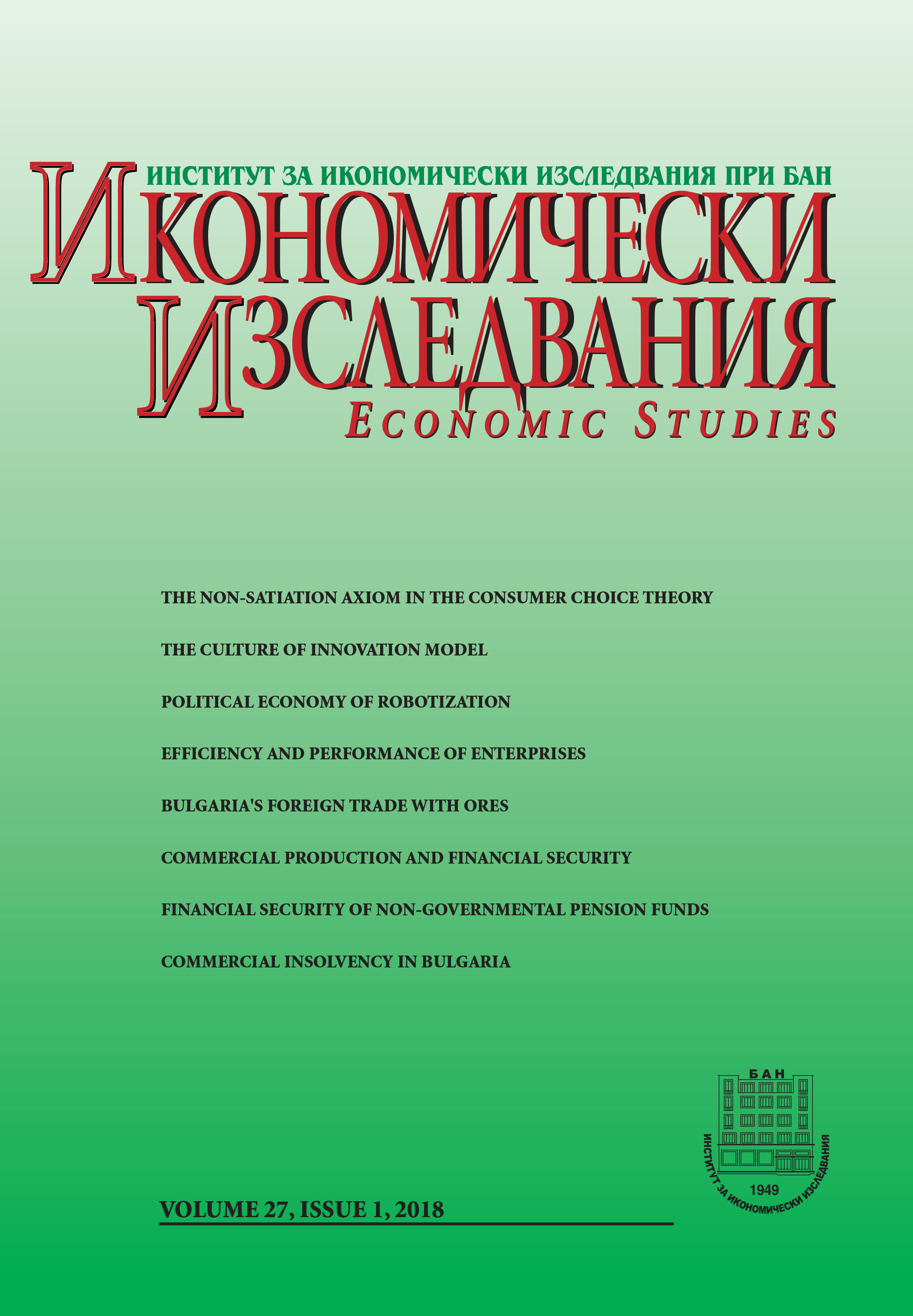Empirical Testing of the Non-Satiation Axiom in the Consumer Choice Theory
Empirical Testing of the Non-Satiation Axiom in the Consumer Choice Theory
Author(s): Vasil StoyanovSubject(s): Economy, Marketing / Advertising
Published by: Институт за икономически изследвания при Българска академия на науките
Keywords: non-satiation axiom; consumer choice theory
Summary/Abstract: The aim of this study is to test the empirical validity of the non-satiation axiom in the consumer choice theory. And to achieve this aim, we decide to use statistical data providing information about the average amount of expenditure per capita in the USA for the consumption of several goods and services that we selected for this study throughout the period 1959-2016, and statistical data providing information about the level of the real disposable income per capita in the USA for the same period. Then, we build up a theoretical model that is based on the Engel curves presented in Luigi Pasinetti with three different shapes, each displaying satiation in the form of zero or even negative slope from a certain level of income onwards. We use this theoretical model as the methodology by which to conduct our empirical study and to obtain the best as possible results from it. And particularly in our empirical study, we conduct a non-linear regression curve fitting analysis between the independent variable level of real disposable income and the dependent variable amount of expenditure for the consumption of a particular good or service. The results from this study show empirical evidence that there is an upper limit on the amount of expenditure that is allocated by a consumer to anyone particular good or service, regardless of how much his income grows. Finally, we reach to the conclusion that this empirical study produces evidence which rejects the validity of the non-satiation axiom in the neoclassical consumer choice theory.
Journal: Икономически изследвания
- Issue Year: 2018
- Issue No: 1
- Page Range: 3-38
- Page Count: 36
- Language: English

